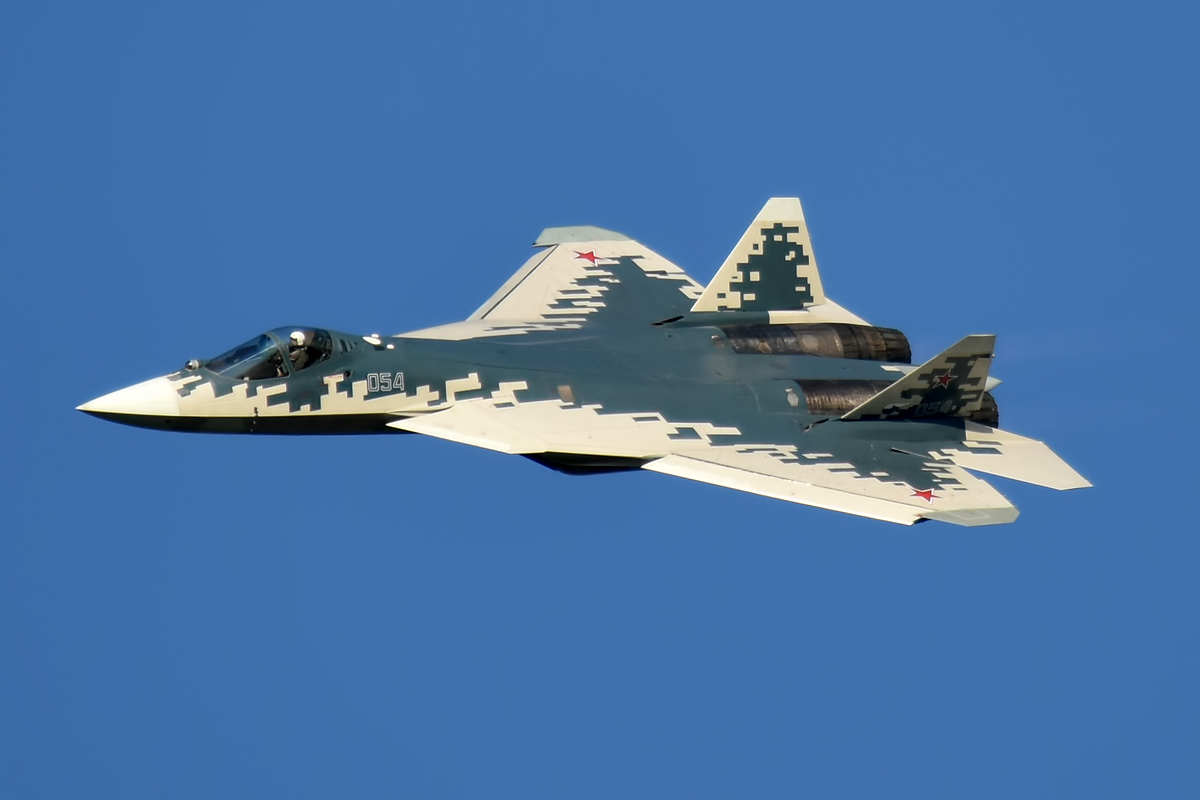
Yesterday, the Russian Su-57 fighter jet made its arrival in China for the Zhuhai Air Show, quickly drawing attention—but not for the reasons its developers intended. Its latest appearance has only contributed to the tarnishing of its reputation, with evidence suggesting that the aircraft’s stealth capabilities are far from impressive. Despite its sleek design and radar-absorbing coatings, the Su-57 appears to underperform when examined closely.
At the airshow, one observer unknowingly captured crucial details of the jet, which soon spread online. These photos revealed the Su-57’s construction, including a surprising number of screws on its fuselage and wings—hundreds of them—rather than the rivets typically associated with stealth aircraft.
The use of screws instead of rivets raises concerns about the aircraft’s radar stealth. Rivets offer a smoother, tighter bond between panels, while screws protrude slightly, reflecting radar waves. Such irregularities could compromise the aircraft’s stealth profile, making it easier for enemy radar systems to detect.
In addition, rivets offer better structural integrity during high-speed maneuvers. Screws, prone to loosening due to vibrations, cannot guarantee the same level of security as riveted joints, which remain stable, crucial for combat scenarios.
Aerodynamically, rivets also provide a smoother surface, reducing drag and enhancing the aircraft’s agility. At speeds close to or exceeding the sound barrier, even minor surface imperfections can affect performance.
Moreover, applying radar-absorbent coatings requires a smooth surface. Rivets allow for a more even application of these coatings, while screws might cause cracks or unevenness, reducing the coating’s effectiveness and increasing the risk of detection.
The issue of screws on the Su-57 was first highlighted a few years ago, when Russian Air Force footage showcased screws on the outer wings and fuselage. This raised questions among military experts, as stealth aircraft are expected to maintain a seamless surface to reduce radar visibility. The choice of screws over rivets cast doubt on the aircraft’s ability to meet stealth standards.
Some experts speculated that screws could be a temporary fix used during the prototype phase, or a method for easier maintenance access. However, these explanations seemed inconsistent with the Su-57’s reputation as a cutting-edge stealth aircraft.
This ongoing scrutiny of the Su-57 points to the technological challenges Russia faces in developing modern stealth fighters. While it aims to compete with fifth-generation fighters like the F-22 and F-35, its visible screws highlight potential flaws in its manufacturing and design standards.
Comparing the stealth profiles of the F-22, F-35, and Su-57 reveals significant differences. The F-22 Raptor, with an extremely low radar cross-section (RCS) of 0.0005 square meters, epitomizes stealth technology, designed with geometry that minimizes radar wave reflection.
The F-35 Lightning II, with an RCS of around 0.005 square meters, offers a balance of stealth and advanced sensor systems, making it highly versatile for modern military operations, even if it doesn’t match the F-22’s near-invisibility.
On the other hand, the Su-57, with an RCS between 0.1 and 0.5 square meters, remains detectable by radar, calling into question the effectiveness of its stealth technology. Despite its impressive agility and weaponry, the Su-57’s design compromises in stealth reveal the difficulties Russia faces in creating advanced fighter jets.
These disparities between the Su-57 and its American counterparts underscore the different strategic priorities and technological advancements of the U.S. and Russia. The F-22 remains the undisputed leader in stealth, followed by the F-35, while the Su-57, despite its ambitions, falls short of its rivals. This highlights both the progress and challenges shaping the future of military aviation.





